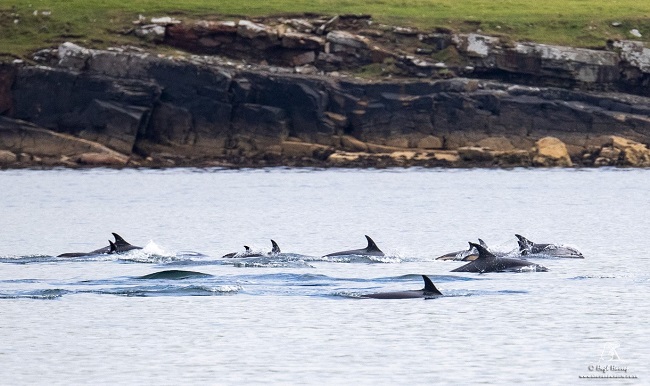Record number of sightings during National Whale and Dolphin Watch week

The annual National Whale and Dolphin Watch concluded earlier this week, with a record number of species spotted by watchers.
Every year, scientists at the Sea Watch Foundation lead a campaign to help members of the general public contribute to scientific endeavours to protect whales, dolphins and porpoises.
For over forty years, Sea Watch Foundation scientists as well as volunteer observers all around the coast of the British Isles from Shetland to the Isles of Scilly have been reporting sightings of whales, dolphins and porpoises (cetaceans) to inform Sea Watch’s huge database of records. The scheme is one of the oldest and longest running citizen science projects in the world and anyone can take part in the watch, which has just completed its 17th year on the 5th August.
Cetaceans can be found all around the coast of the UK and there have already been a record number of species spotted. So far, more than two hundred records have been entered from Shetland down to South Devon and from the west coast of Wales to the Outer Hebrides, and the count is expected to rise as the final counts are submitted now that the watch is over.
Cetaceans spotted include familiar species such as bottlenose dolphins which are presently being sighted daily in New Quay along the west coast of Wales, and off Chanonry Point in the Moray Firth as well as regularly in Aberdeen harbour. Harbour porpoises are the most common and widespread species in Britain, and they can be spotted almost anywhere with records coming in from all around the British Isles.
White-beaked dolphins have been sighted just off the coast of Northumbria as well as all along the east coast of Scotland and in the Northern Hebrides. And there is no reason to travel as far as Norway or Iceland to see orcas, minke or humpback whales as all three have been reported over the past week – orcas in Shetland; minke whales around Scotland and even the mighty humpback whale in the North Sea off the Aberdeenshire coast.
It’s not too late for people to join in with the national effort to monitor whales and dolphins and the scientists behind the event are urging people to head to the coast to take part. “No experience is necessary, you just need to download a watch form from our website, record the environmental conditions every fifteen minutes and watch for at least an hour”
Dr Chiara Giulia Bertulli, Sightings Officer for Sea Watch Foundation said:
“We need as many eyes on the sea as possible. That means we’re looking for people all around the UK coast to join a manned watch or arrange a watch for themselves, and for everybody to report the animals that they see as soon as possible” says
“For me, National Whale and Dolphin Watch is about involving people and allowing them to experience something they never thought they could be part of, it is about collecting vital data for the protection and conservation of local cetacean species, and it is about sharing this magical event with people from all other the country and have fun all together”
All the verified sightings so far can be viewed online where they are updated as more reports come in.
Find out more about the event, and keep an eye out for the complete report, on the Seawatch Foundation's website.
View the 2017 National Whale & Dolphin Watch Report here.


